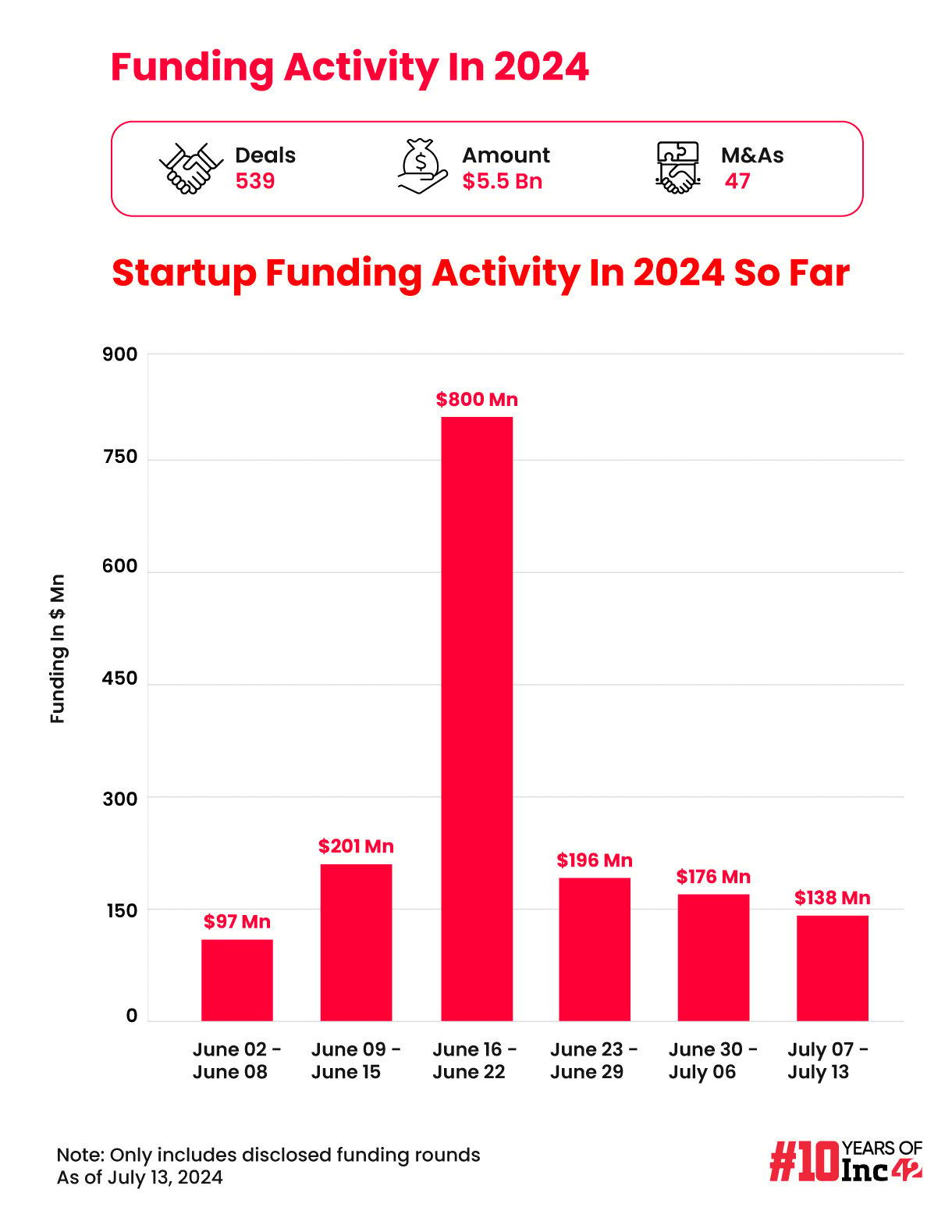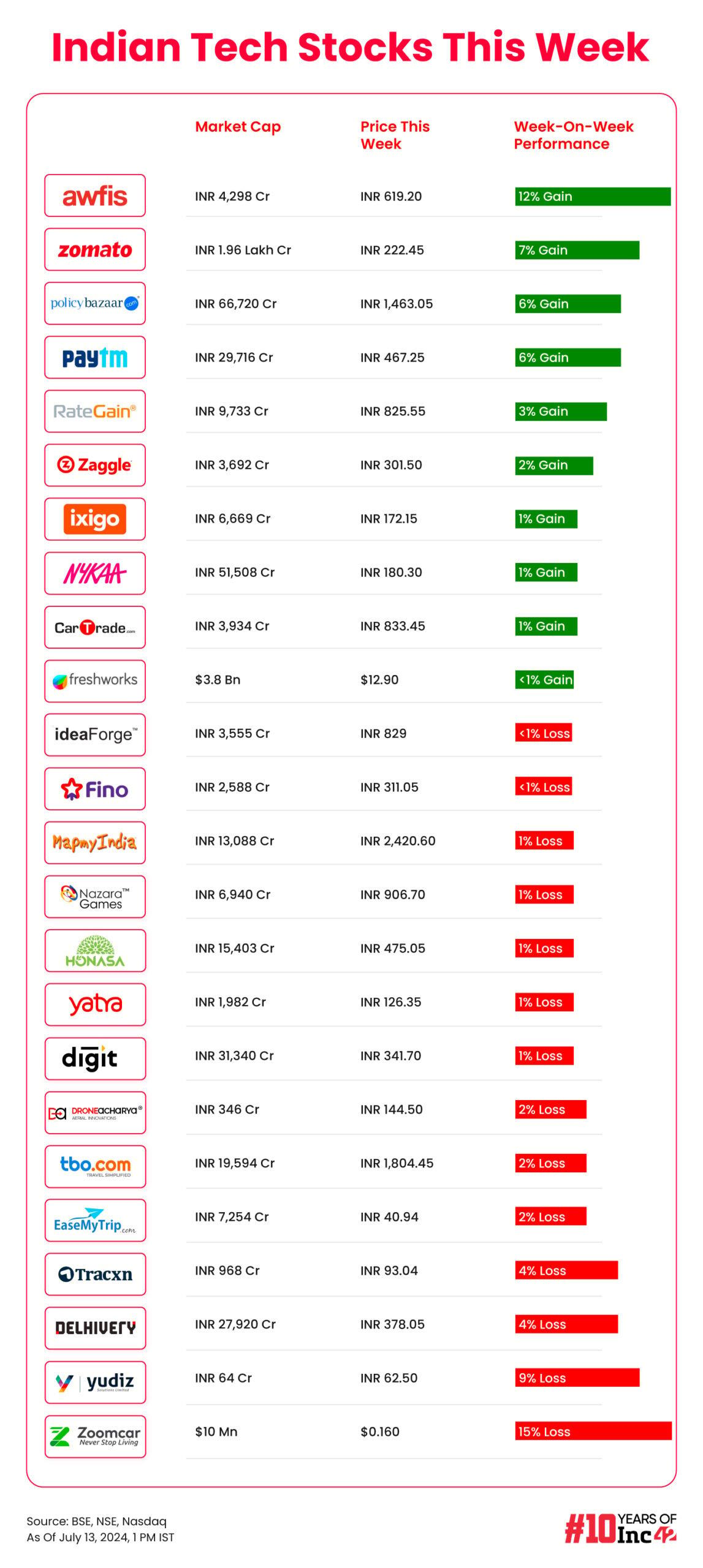It’s hard to miss the Ambani family and Reliance this week. The unabashed opulence and the sheer scale of the Anant Ambani and Radhika Merchant wedding ceremony has become the talk of all the world.
But there’s another Reliance-related development that has managed to grab more than its fair share of attention in the last month or so. We can’t imagine many out of the 470 Mn-plus Jio 4G subscribers were happy about the tariff hike announced by Reliance Jio and then by other telcos earlier this month.
And the news was soon followed by a report from brokerage Jefferies about a Reliance Jio IPO by 2025, thanks to the growing focus on monetisation amid market share gains. In other words, consumers can forget about free internet with Jio or indeed for most other Jio internet services as we have seen already with JioCinema in the past year.
How will this change the India internet story? For so long, Reliance Jio’s volume-driven low-pricing strategy has been credited with driving the Indian internet ecosystem as well as digital consumption. Will the price bump cut this narrative short or is India ready to pay a lot more for 4G and 5G services?
That’s after these top stories from our newsroom:
- Prosus’ New Strokes: The investment giant is testing waters with early stage bets in India after its late stage portfolio — comprising unicorns such as BYJU’S, PharmEasy, Meesho and others — is caught on the slow road to profitability
- Caught In Growpital’s Net: More than 5,000 Indians put in their hard earned money into agri investment platform Growpital, and now are unlikely to see a dime back as the company faces allegations of running a fraudulent platform from SEBI and others. Here’s our investigation
- InDrive’s India Push: With over 240 Mn users worldwide, US-based InDrive is making a serious bid for market share in India with a driver-centric fare negotiation and low-commission model. Can it catch up to Ola and Uber even as it competes with other platforms looking to do the same?
Reliance Jio Drives The Market
It’s important to understand that Jio’s dominance has created a situation where the company is India’s telecom market to some extent.
It’s not just Reliance Jio, even Airtel and Vodafone Idea (Vi) raised tariffs with industry wide hikes ranging between 10% and 27% depending on the plan.
While Airtel and Vi increased the tariff for monthly prepaid recharges from INR 179 to INR 199, Jio raised it from INR 155 to INR 189. Airtel and Vi increased prices for annual plans from INR 1,799 to INR 1,999, while Jio surged it from INR 1,559 to INR 1,899.
Even though Jio still has the cheapest plans in the market, it has a sizable majority in terms of market share.
India’s telecom subscriber base crossed the 1.2 Bn users in April 2024, with Reliance Jio commanding 472.4 Mn of this or nearly 40% of the market. Airtel is the next largest with 267.5 Mn subscribers in April 2024, while Vi has 233 Mn and BSNL has 93 Mn subscribers. The lopsided nature of the market is clear from the fact that Jio is just shy of having more users than both Airtel and Vi.
However, the rivalry between Airtel and Jio is considered to be most relevant for the Indian market.
Jio’s lower pricing means that it has the lower average revenue per user or ARPU compared to Airtel despite its high market share. Reliance Jio’s ARPU grew to INR 181.7 in Q4 FY24 from INR 178.8 in the previous quarter. Airtel boasts of ARPU of INR 209 in Q4, compared to INR 193 in Q3.
The direct impact of the tariff hike will be seen in the ARPU for Q2 FY25, results for which are expected around October or November this year. But we expect a major bump for both telcos because the fact that the hikes are industry wide will limit attrition rates to a large extent.
Jio’s Revenue Push
While in isolation the price hikes might be seen as a market-dictated development and a run-of-the-mill action, the other penny drops when you read it along with the Jefferies report on the IPO. Jefferies specifically cited Jio’s focus on monetisation as a shift in business strategy.
According to the brokerage’s report, Jio could list at a $112 Bn valuation which would certainly make it one of the largest companies even within the Reliance empire.
Jio posted a 12% YoY increase in its consolidated net profit to INR 5,583 Cr in the March quarter of FY24. Its operating revenue increased 13.4% YoY to INR 28,871 Cr in the quarter.
The higher revenue inflow from the price hikes are also likely to help the company compensate for the expensive pan-India 5G rollout and deployment of new technologies such as AI.
In June, the company also launched two new apps – JioSafe for communications and file sharing as well as AI-powered translation app JioTranslate. Both have been launched as paid products, clearly underlining the fact that Jio is no longer interested in free products.
In an age when most startups are looking to maximise their revenue efficiency, Jio has no option but to do the same, but its impact is deeper than other examples on this front, such as the platform fees seen on delivery platforms.
Where Is the Regulator?
On reflection, this was long on the cards. For years, many have spoken about how Jio needs to turn on the monetisation engines for its telecom services. But since launch in 2015, Jio has largely focussed on building a captive user base that would ensure that any monetisation-driven attrition will not impact profitability in the long term.
Consumers have been up in arms about the price hikes, as it does impact their livelihoods and disrupts lifestyle aspects such as entertainment, education and more. It cannot be denied that lakhs of Indians depend on mobile internet to earn a living.
Zomato, Swiggy, Ola, Zepto, Blinkit, Uber, Rapido, as well as hundreds of thousands of gig workers on the road for other companies all rely on mobile internet for daily wages. Indeed, plenty of JioMart gig workers would also be impacted by these changes.
While most Jio employees get free data plans, this is not the case for gig workers associated with Reliance or Reliance-backed companies. While gig worker wages have not increased in the past year or have been reduced, as seen in the case of Blinkit last year, they now have to fork up more money just to get out there and be able to work.
One trade union tried to get the Prime Minister to enable BSNL to launch 4G and 5G services with more affordable tariffs, and there was a social media call for BSNL to play the role of market vanguard as a state-run company, but it’s unlikely that the government will intervene in this matter.
“There is enough competition in the telecom sector, and the situation is not critical…. Consumers may feel some pinch of the price rise, but the hike has happened after three years,” a government official was quoted by ET.
But in the past, we have seen telecom regulator TRAI step in to investigate price fixing and cartelisation in the telecom sector, even when the battle was about SMS pricing. In May 2023, TRAI said it would be looking at predatory pricing by Airtel and Jio after a complaint by Vi, but there has been no word on this probe since then.
Incidentally, TRAI said its investigation will go back to telecom pricing in the 2G era since it needs to investigate the origin of predatory pricing. By all indications, this is not going to be a quick exercise. So for now, consumers and those using 4G internet to earn a living have to foot the higher bill.
What Happens To The Indian Internet Ecosystem?
There could be ramifications from this on the business side as well as for growth of tech products and services. The risk of a digital divide based on propensity to spend is real.
And it is also becoming increasingly clear that Reliance’s companies such as Reliance Retail and Jio Financial Services have become key competitors to the major startups and tech companies in the country.
Jio has turned into a competitor from an enabler of startups in the early days when it gave Indians almost free internet connectivity to use startup services and products
One investor told Inc42 last year that Jio gave Reliance the pipeline through which it can feed all these services in the future.
A lot of the investment thesis driving capital inflow to India is built on the idea that internet usage and consumption in India has unstoppable momentum. Will this thesis change?
With AI services growing and their use directly linked to lower personal income, limited access to the internet will only increase the economic divide rather than closing it. These are of course questions that cannot be answered in isolation or without the right data.
Will India’s consumption pattern for video streaming and gaming change with more expensive plans? And will that consequently make India a less attractive investment destination?
Sunday Roundup: Startup Funding, Tech Stocks & More


- Indian startups raised just over $138 Mn across 15 deals this week, which is roughly around the weekly average for the year, but surprisingly, there were five separate M&As announced. How many of these will actually go through?
- In a major blow for big tech giant Apple, competition watchdog Competition Commission of India has found the iPhone maker guilty of abusing its dominant position in the app store market, as per reports


- Shares of Zomato touched a new all-time high of INR 223.40 this week, before settling down at INR 222.45 at close on Friday, with the stock showing a marked improvement in the last month
- Ecommerce major Flipkart has added mobile recharge and bill payment options to its fintech super app, which was launched with UPI payments and personal loans through Super.Money
- Yet another tech startup is going for an IPO — Jaipur-based D2C men’s grooming brand Menhood is all set to go public with an NSE Emerge listing and bidding will open on July 16
- Flipkart-backed logistics unicorn BlackBuck has filed its DRHP with markets regulator SEBI for its INR 550 Cr-plus IPO with the three founders and most investors offloading shares



![[CITYPNG.COM]White Google Play PlayStore Logo – 1500×1500](https://startupnews.fyi/wp-content/uploads/2025/08/CITYPNG.COMWhite-Google-Play-PlayStore-Logo-1500x1500-1-630x630.png)